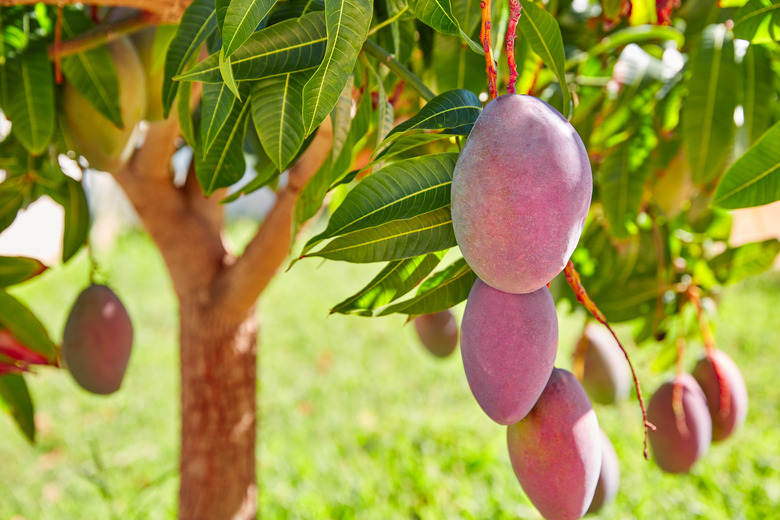How To Grow A Mango Tree Faster
We may receive a commission on purchases made from links.
You may have read that to encourage a mango tree to grow faster, you should plant a grafted tree. This is not so. Grafted trees actually grow more slowly than seedlings even though they produce fruit much sooner. But grafted trees provide important benefits that you cannot get from a seed-grown tree, so they are generally better in the home landscape.
The thing about mango trees (Mangifera indica, USDA plant hardiness zones 10B through 11) — and in fact, all trees — is that they operate on their own time. You can encourage growth through fertilizer application or ideal environmental conditions, but you might end up with a lot of leafy growth at the expense of flowers and fruit.
Mango Tree Size and Growth Rate
Mango Tree Size and Growth Rate
It's tough to estimate an average growth for mango trees because so much depends on the environment. For instance, they have a very low cold tolerance, so they thrive only in tropical areas. If your goal is to have a mango tree in a colder zone, you can coddle it by growing it in a pot and bringing it inside in winter, in which case you'll want a dwarf variety, but it may never get the amount of sun and warmth it craves to grow robustly and produce fruit.
Mangos are big trees. They can reach 90 to 120 feet tall and 80 feet wide in ideal growing conditions, but cultivated mangos in the colder range of their growing zones might grow only half that size. Experts all define the mango as a fast-growing tree, but take "fast" with a caveat because again, it's all about the environment. They have been known to add 6 feet in their first year, but that growth rate slows once they start fruiting.
Encouraging a Faster Growth Rate
Encouraging a Faster Growth Rate
The first step to ensure an optimum mango growth rate is to plant the tree where it can thrive. Mangos require dry and very warm conditions. They grow in Hawaii but in the lower elevations, doing best with a fairly cool dry season followed by a hot season when fruits are being developed. They have been planted successfully in California's warmer inland areas away from cool marine air and fog. They dislike wet and humid conditions, which create an environment in which they are susceptible to anthracnose fruit rot and also poor fruit set.
Make sure your young mango tree doesn't dry out, but don't let it get waterlogged. Situate it in a warm, sunny location in soil with good drainage. Young mango saplings should be watered every few days in warm and dry temperatures to ensure even soil moisture. Mangos produce long taproots, so once the trees are 3 or 4 years old, cut back on the watering.
Mango trees require a lot of nutrients. When the tree is young, fertilize it twice yearly with a high-nitrogen fertilizer to encourage strong, leafy growth. Once the tree flowers and begins to produce fruit, usually two to four years after planting for grafted trees, switch to a fertilizer mix that is higher in phosphorus and potassium — for example, a 4-10-10 mix applied two to four times a year.
